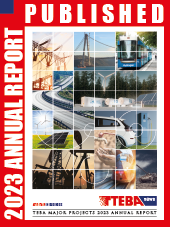9/27/2017
Deputy Prime Minister Şimşek Disclosed the 3-Year Medium Term Program (MTP) Foresights
“The main targets of the MTP are listed as acceleration in the growth rate, an increase in the employment rate and the betterment of income distribution. We are decisive to sustain the fiscal discipline also in the coming period. We are targeting an annual growth rate of 5.5 percent between 2017 and 2020. We estimate that the unemployment rate will be 10.8 percent this year, 10.5 percent next year, 9.9 percent in 2019 and 9.6 percent in 2020. The Current Account Deficit / GDP ratio is estimated to be 4.6 percent this year, 4.3 percent next year, 4.1 percent in 2019 and 3.9 percent in 2020. We foresee an inflation rate of 9.5 percent at the end of the current year.”
Deputy Prime Minister Şimşek made disclosures on the “Medium Term Program”. Şimşek noting that the global economy regained speed in 2017 and the global growth rate will possibly be around 3.5 percent, spoke as follows: “Indicators reveal that the growth rate may still be on a moderate rise. The Global Manufacturing Competitiveness Index has reached the highest point of the past 75 months. Economic activities are on the rise in the Euro zone. This is a good signal for the trade of our country. We observe a recovery in industrial production and investments in 2017 and we estimate an increase of 3.9 percent on the average in the trade volume. Taking a look at the global inflation rate, it is observed that there is a moderate process going on. Inflation rates which were at low levels in 2016 particularly in developed countries have displayed a slight increase this year. The low level of inflation rates in the Euro zone and Japan provide the means of implementing expansive monetary policies in these countries. A net capital inflow of $ 1.3 trillion realized in developing countries in the period of 2010-2013 in total, whereas a net capital inflow of $ 1.5 trillion was recorded in the following 4 years. The trend gained more power especially in 2017. A net capital inflow of $ 138 billion is expected to developing countries except China. Oil prices fell considerably since the second half of 2014. Prices remained at a level of between $ 50 – 55 in 2017 upon a cut-down by OPEC countries. Prices have increased slightly in recent days with the effect of the developments in Iraq. Non-fulfillment of several OPEC countries of the decision on a cut-down results with a limited increase in oil prices.” “We are decisive to sustain the fiscal discipline also in the coming period” Şimşek stated that the Current Account Deficit of Turkey is at manageable levels, that the ratio of the deficit to GDP has recovered considerably and that they aim to keep the current account balance at a sustainable level in the coming period accompanied with a more balanced growth composition. Şimşek said, “We aim to reduce the Current Account Deficit / GDP ratio to a level below 4 percent at the end of the program.” Şimşek said that sustainable low levels in the inflation rate during the MTP period are among their priorities and spoke as follows: “We are decisive to sustain the fiscal discipline also in the coming period. We have reduced the public debt burden considerably. The public debt is quite low according to international standards. The main targets of the MTP are listed as acceleration in the growth rate, an increase in the employment rate and the betterment of income distribution.” Şimşek made the following statement in relation with the macro-economic targets in the MTP: “FED’s interest rate hike, geopolitical tensions and protectionism in global trade are the most significant risks” Şimşek made the following statement on risks in the global economy: “Taking a look at global risks, it is observed that one of these is a tightening of monetary policies by the Federal Reserve Bank (FED) in a more rapid manner than expected. Members of FED have disclosed that they expect an interest rate hike until the end of the current year and 3 more hikes next year. Market pricing implementations reflect only 2 interest rate increases until the end of 2018. Our second risk area consists of geopolitical tensions. The tension in the Middle East in the recent period has increased these risks. Also, another risk which became evident after the global crisis is the implementation of protectionist measures in trade.”
Annual Report
